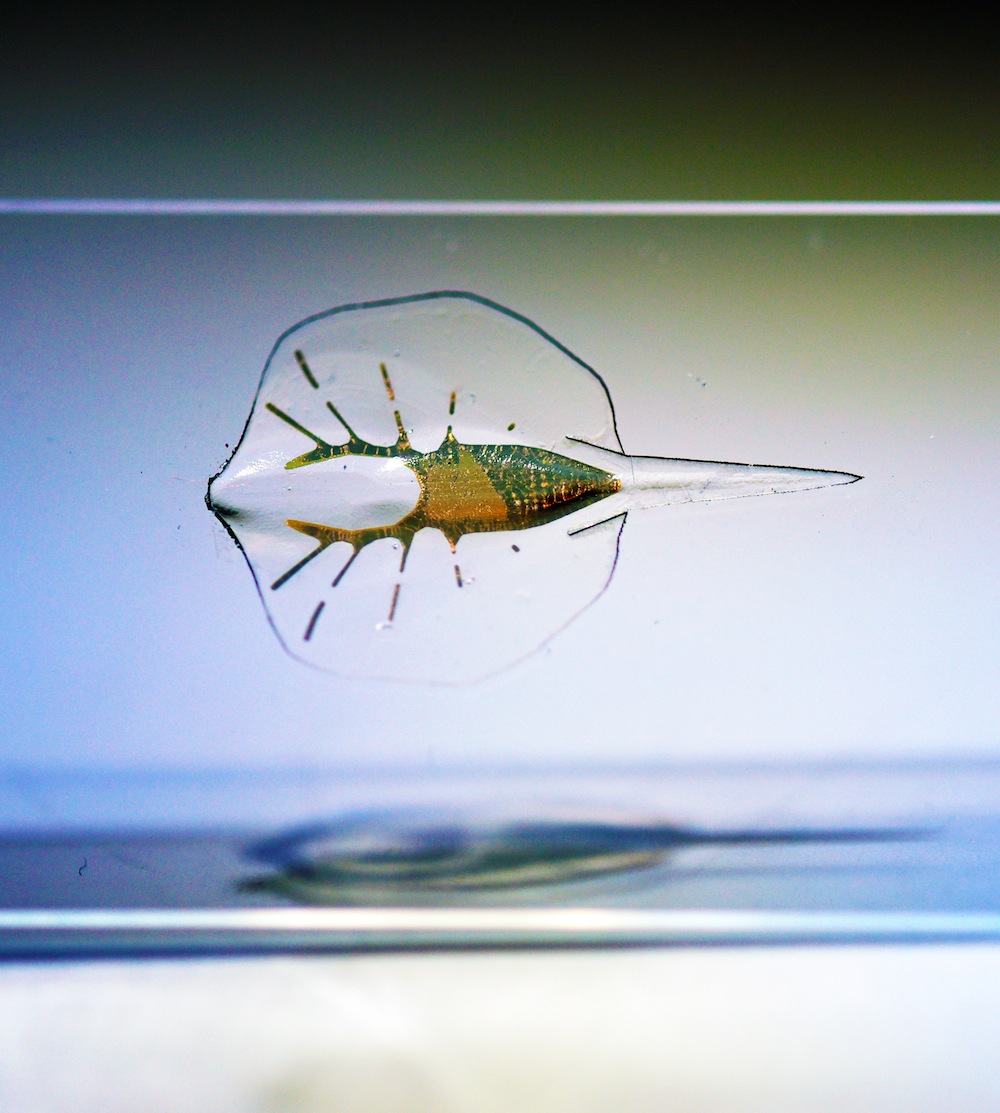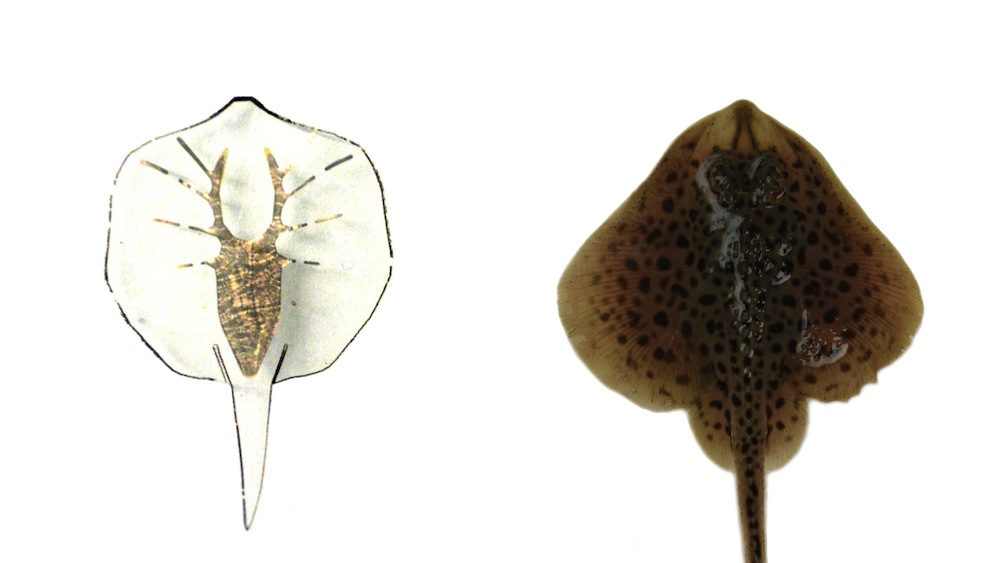
Stingray Robot Uses Light-Activated Rat Cells to Swim

A new robot stingray can swim with help from an unexpected source: muscle cells that were taken from rat hearts, a new study finds.
Understanding how to build machines from heart cells could lead to scientists being able to build entire living artificial hearts from muscle cells that would act more like natural hearts, the researchers said.
Stingrays and related fish have flat bodies with long wing-like fins. These fins undulate in waves that ripple from the front of the fins to the back, energy-efficient motions that help these fish glide through water. [The 6 Strangest Robots Ever Created]
Researchers sought to build a robot that emulates the stingray's efficiency and maneuverability. When study senior author Kit Parker, a bioengineer at Harvard University, examined stingrays, he noted that the beating of their wings resembles the beating of hearts, which inspired him to use rat heart-muscle cells, he said.
The scientists began with skeletons that mimicked the shape of stingrays that were made of gold, which was chosen for its chemically inert nature. These skeletons were then covered with a thin layer of stretchy plastic and a thicker body of silicone rubber. On the top of the robot, the scientists placed muscle cells from rat hearts. When stimulated, these cells contracted, pulling the fins downward.
The scientists wanted to keep their robot light, so they wanted to avoid weighing it down with a second layer of cells to pull the fins back up. Instead, they designed the skeleton in a shape that stores some of the energy used to pull the fins down and releases it when the robot's cells relax, allowing the fins to rise, they said.
The robot's cells were also genetically engineered to react to light. The researchers used pulses of light to steer the robot to the left or right, and altered the wavelengths of light to control its speed. The scientists were able to control the robot well enough to guide it through a simple obstacle course, with the machine swimming at a speed of about 0.06 inches (1.5 millimeters) per second over a distance of about 9.85 inches (250 mm).
Get the world’s most fascinating discoveries delivered straight to your inbox.
Containing about 200,000 rat heart-muscle cells, the robot measures 0.63 inches (1.6 centimeters) long and weighs just 10 grams (0.35 ounces). The robot swims in a liquid that is loaded with sugar that serves as fuel, the researchers said.
"It's alive, but it's not an organism — it can't replicate, it can't reproduce," Parker told Live Science "We make them in batches of five or six, and they live about a week, maybe less."
Parker's aim with this research "is to build replacement organs for sick kids," he said. "Ultimately we want to build a whole heart. We're already looking at building a robot based off another marine life-form to test our skill set a bit more."
The scientists detailed their findings in today’s (July 8) issue of the journal Science.
Original article on Live Science.


